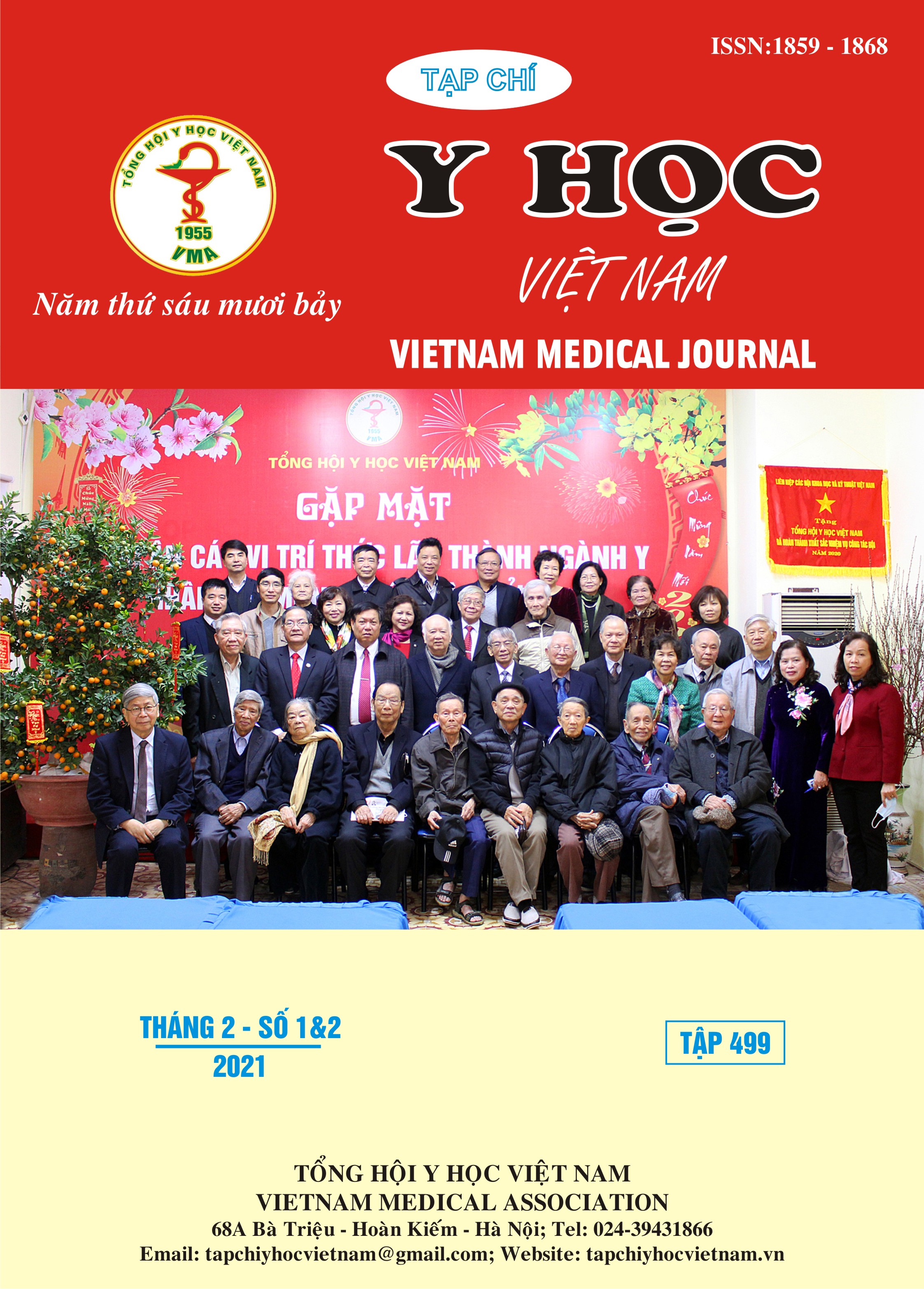MỘT SỐ YẾU TỐ LIÊN QUAN ĐẾN KẾT QUẢ ĐIỀU TRỊ HORMON TÁI TỔ HỢP Ở TRẺ THIẾU HỤT HORMON TĂNG TRƯỞNG
Nội dung chính của bài viết
Tóm tắt
Thiếu hụt hormon tăng trưởng là tình trạng tuyến yên không sản xuất đủ hormon tăng trưởng dẫn đến tình trạng lùn ở trẻ em. Tỷ lệ mới mắc dao động 1/3500 – 1/4000. Mục tiêu: Nhận xét một số yếu tố liên quan đến kết quả điều trị hormon tái tổ hợp ở trẻ thiếu hụt hormon tăng trưởng. Đối tượng và phương pháp: 159 bệnh nhân được chẩn đoán và điều trị thiếu hụt hormon tăng trưởng tại Bệnh viện Nhi Trung ương từ tháng 01 năm 2010 đến tháng 06 năm 2019. Nghiên cứu một loạt ca bệnh, đối chứng trước và sau điều trị. Kết quả: trong số 159 bệnh nhân thì nhóm bệnh nhân có nồng độ GH đỉnh test kích thích ≤ 5ng/ml có mối tương quan tuyến tính giữa tốc độ tăng trưởng chiều cao (cm) trong năm đầu với nồng độ GH đỉnh, nồng độ GH đỉnh càng thấp, tốc độ tăng trưởng càng cao; ngoài ra tuổi bắt đầu điều trị, tuổi xương thời điểm bắt đầu điều trị đều có mối tương quan tuyến tính với tốc độ tăng trưởng chiều cao (SDS, cm) trong năm đầu, điều trị càng sớm, tuổi xương càng thấp thì tốc độ tăng trưởng chiều cao năm đầu càng cao. Kết luận: Bệnh nhân được chẩn đoán và điều trị thiếu hụt hormon tăng trưởng sớm, tuổi xương và nồng độ GH đỉnh test kích thích thấp có đáp ứng tốt hơn với liệu pháp hormon tái tổ hợp thay thế.
Chi tiết bài viết
Từ khóa
Thiếu hụt hormon tăng trưởng, hormon tăng trưởng tái tổ hợp, lùn ở trẻ em
Tài liệu tham khảo
2. Takeda A., Cooper K., Bird A. et al. (2010). Recombinant human growth hormone for the treatment of growth disorders in children: a systematic review and economic evaluation. Health Technol Assess Winch Engl, 14(42), 1–209, iii–iv.
3. Gharib H., Cook D.M., Saenger P.H., et al. (2003). American Association of Clinical Endocrinologists medical guidelines for clinical practice for growth hormone use in adults and children--2003 update. Endocr Pract Off J Am Coll Endocrinol Am Assoc Clin Endocrinol, 9(1), 64–76.
4. Grimberg A., DiVall S.A., Polychronakos C, et al . (2016). Guidelines for Growth Hormone and Insulin-Like Growth Factor-I Treatment in Children and Adolescents: Growth Hormone Deficiency, Idiopathic Short Stature, and Primary Insulin-Like Growth Factor-I Deficiency. Horm Res Paediatr, 86(6), 361–397.
5. Polak M., Blair J., Kotnik P, et al. (2017). Early growth hormone treatment start in childhood growth hormone deficiency improves near adult height: analysis from NordiNet® International Outcome Study. Eur J Endocrinol, 177(5), 421–429.
6. Kang MJ., Kim EY., Shim YS., et al. (2019). Factors affecting bone age maturation during 3 years of growth hormone treatment in patients with idiopathic growth hormone deficiency and idiopathic short stature: Analysis of data from the LG growth study. Medicine (Baltimore), 98(14), 962 -972.
7. Kaplan S.L., Abrams C.A., Bell J.J, et al. (1968). Growth and growth hormone. I. Changes in serum level of growth hormone following hypoglycemia in 134 children with growth retardation. Pediatr Res, 2(1), 43–63.
8. Straetemans S., Thomas M., Craen M, et al. (2018). Poor growth response during the first year of growth hormone treatment in short prepubertal children with growth hormone deficiency and born small for gestational age: a comparison of different criteria. Int J Pediatr Endocrinol, 2018, 9 – 17.


